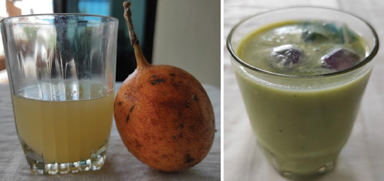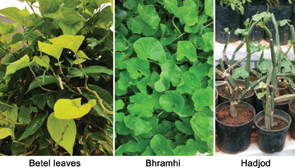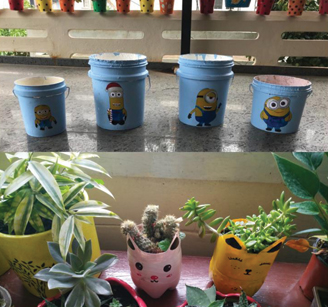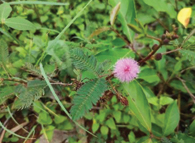Nandini D
Everyone wishes to be happy and healthy. Gardening is a simple way of achieving both health and happiness. It can be taken up by anyone at any age. Gardening enhances awareness of one’s surroundings, improves cognitive skills and provides an opportunity to appreciate nature, especially since most of us live in urban jungles. While eco-clubs and nutrition gardens are slowly making their way into schools, many are still unaware of the benefits of gardening. Therefore, Teacher Plus brings you a monthly column on gardening. Articles in this column will provide information about common plants and their use in daily life. Each article will focus on a set of activities and provide a broader scope for learning.
“It has become difficult! She is spending a lot of time and Shilpa’s grandmother is also joining her. I will have to keep a gardener now,” Shilpa’s mother, Madhavi complained to me.
“Is it? We can discuss about it. Come home with your daughter today. Sujatha and the other children will also join.”
As agreed, everyone arrived by three in the afternoon. Sujatha and Anand joined me to serve smoothie and juice.

“I know this yellow colour juice is from Passion fruit. What is this new drink? It is green and thick. You added coloured ice cubes also!” Vivan said.
“You are right. This is another drink from my garden.”
“You give surprise every time, aunty. I know the ice cubes are made from butterfly pea plant flower. But how about the juice?”
“You taste and let me know.”
Everyone started sipping. Madhavi said, “It is tasty. Have you added sugar and milk?”
“I added a little cold milk but not sugar. I made the smoothie with banana, giloy, bhramhi and betel leaves. It is simple.”
Sujatha asked, “You are growing betel leaves also? And is this long cone like thing a fruit? Looks like long pepper.”
“Yes, black pepper, long pepper, betel vine, all belong to the same family, Piperaceae.”
“Oh! It’s wonderful. I will also prepare smoothie next time when we bring betel leaves.”
“Sure! Whatever other leaves you have at home, you can add. Like methi leaves or even butterfly pea plant leaves.”
“Can you show me bhramhi, what is it?”
“See, this is bhramhi (Centella asiatica). Can anyone tell me which part of the human body its leaves resemble?”
“Is it the brain?”

“You are right Shilpa. These leaves are used in the preparation of medicines to treat memory related problems like dementia.”
“You have seen this climber, giloy, its leaves are heart shaped. It is reported to possess cardio-protective agents.”
Vivan pointed, “What is this aunty? It is like cactus. Looks like a skeleton.”
“I know this, Shilpa’s paati prepares ‘chutney’ out of this. She calls it Pirandai,” Madhavi replied.
“It is also called ‘hadjod’ (Cissus quadrangularis) in Hindi, means it sets bone. It is rich in vitamins and calcium. Folk healers used this to set bone fracture. It belongs to the grape vine family.”
“Nature gives a clue, how you can heal yourself by understanding the plant. It is called Doctrine of Signature.”
“It is interesting. Now we can remember the plants and their uses,” Sujatha commented.
I called out to the other children, “You can see that book later. All of you come here. It is more than a month now, tell me how you feel about growing plants? What have you learnt?”
“It is fun. I am growing juice garden. I am using all old buckets and bottles as pots,” Vivan replied.
Anand said, “I am using old shoe rack to arrange pots in the balcony. Already I plucked amaranthus and coriander leaves to make soup.”
“I am doing chroma garden. Me and mom painted some old cans before planting. Now pots look beautiful in the balcony,” Rina said.

Shilpa was eager, “Even I keep waiting everyday to get into the garden. I love to make one pond with lotus and fish. Paati also says, we can grow some vegetables.”
“It means you are all enjoying your gardening work. Great! Let’s clap for everyone.”
“But Nandini, the plants and pots keep adding. We must spend a lot of time tending to them if we keep plants. When we go on holidays, who will water the plants? Shilpa dirties her hands and clothes. Her paati also joined her. You know she is getting old,” said Madhavi.
Anand and Vivan, took a book lying on the table and spreading it in front of me asked, “What is this man doing sitting in a wheelchair?”
“He is sowing seeds. Special tools are devised to help the challenged get involved in gardening. This book is on horticulture therapy.”
“Gardening helps to revive and cure. It is one of the supporting therapies. Horticulture therapy helps people of all ages, who are visually challenged, children with learning disabilities or people who have been through trauma to recover.”
“You mean treatment is given by someone? How does it help?” Sujatha asked.
A trained horticulture therapist understands the challenges faced by the patient and designs a set of activities that will help in healing. Actions like sowing seeds, watering plants, plucking weeds, supporting climbers to grow improve self-confidence, concentration and hand-eye coordination. This therapy is quite popular in western countries, there are many associations that are advancing horticulture as therapy.”
“I never imagined such things exist!” Sujatha exclaimed. “Now I recall how our grandparents lived happy and healthy in villages. My grandfather spent all his life maintaining the orchard. I have not seen him falling sick or grumbling any time.”
“All of you have seen the ‘touch me not’ plant. You probably enjoy touching the plant often to see it curl up when you touch it.”
“Yes aunty, I do it whenever I see the plant on roadside.”
“So this small act of a plant makes you happy.”
“You all know it is necessary to keep all the sense organs active, throughout our lives. The ‘touch’ tells us whether the object is hot, cold, soft, rough, hairy. The aroma of flowers brings good feelings. The vision senses different shapes and colours. The taste of fresh fruits and vegetables you are already enjoying from your garden.”
“If paati is active, less burden on us. So, I will get all the gardening tools. Let granddaughter and grandmother enjoy,” Madhavi said convinced.
“Nandini aunty, I have seen butterflies in your garden,” said Anand.

“I have seen birds also. Small birds with red patches on cheek and below the tail. Its call is loud,” Vivan added.
“Listening is also very important. When we listen to the chirping birds, feel the wind that brings aroma, they enhance our happiness.”
“You can request your neighbours to water the plants when you are out of town. You can also try hanging a water bottle with a small opening, so that water keeps dripping over the pot, like drip irrigation.”
“Overall, by getting into gardening we have become active and innovative,” Sujatha laughed.
“Yes Sujatha, now you and Madhavi should plan an outdoor trip. Having a garden at home doesn’t mean you stop doing other things you like.”
Find the answers
- Make a list of the spices in your kitchen and write about their medicinal value.
- Which spices can you grow in your garden?
References
- Ganesh Babu and Nandini D, 2016, I love my Herbal Garden, FRLHT, Bengaluru
- Radha Eswar, Ganesh Babu et al., 2016, Herbal Gardening Heals, FRLHT, Bengaluru
- https://www.homeobook.com/doctrine-of-signature-a-source-of-homoeopathic-materia-medica/
- https://www.ahta.org/horticultural-therapy
The author is a botanist. She has been involved in teaching and research for more than 25 years. Currently she is working as a consultant for We Care Society (WCS), Bengaluru and is visiting faculty RIWATCH, Roing, Arunachal Pradesh. She can be reached at nandinidholepat@gamil.com.
